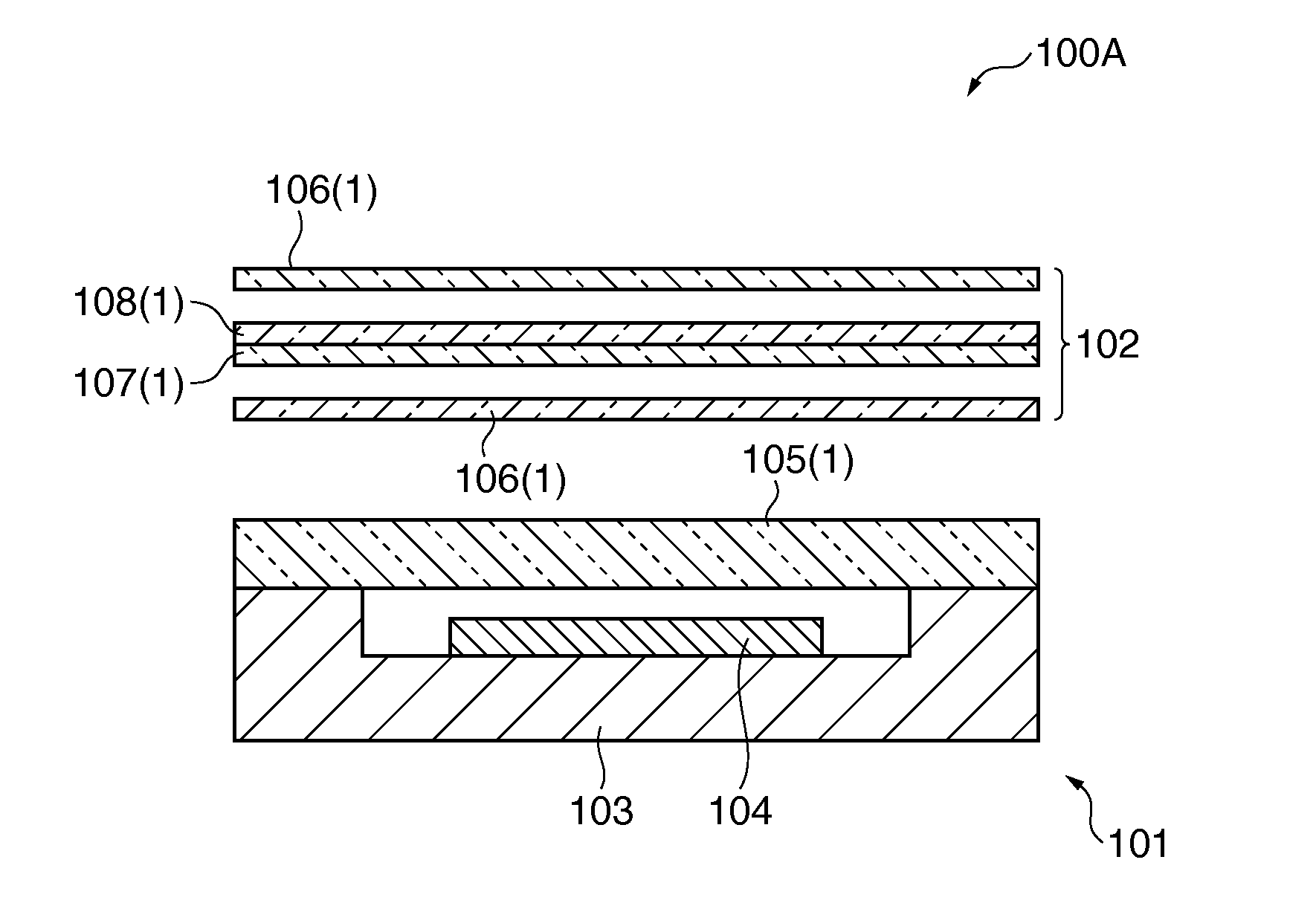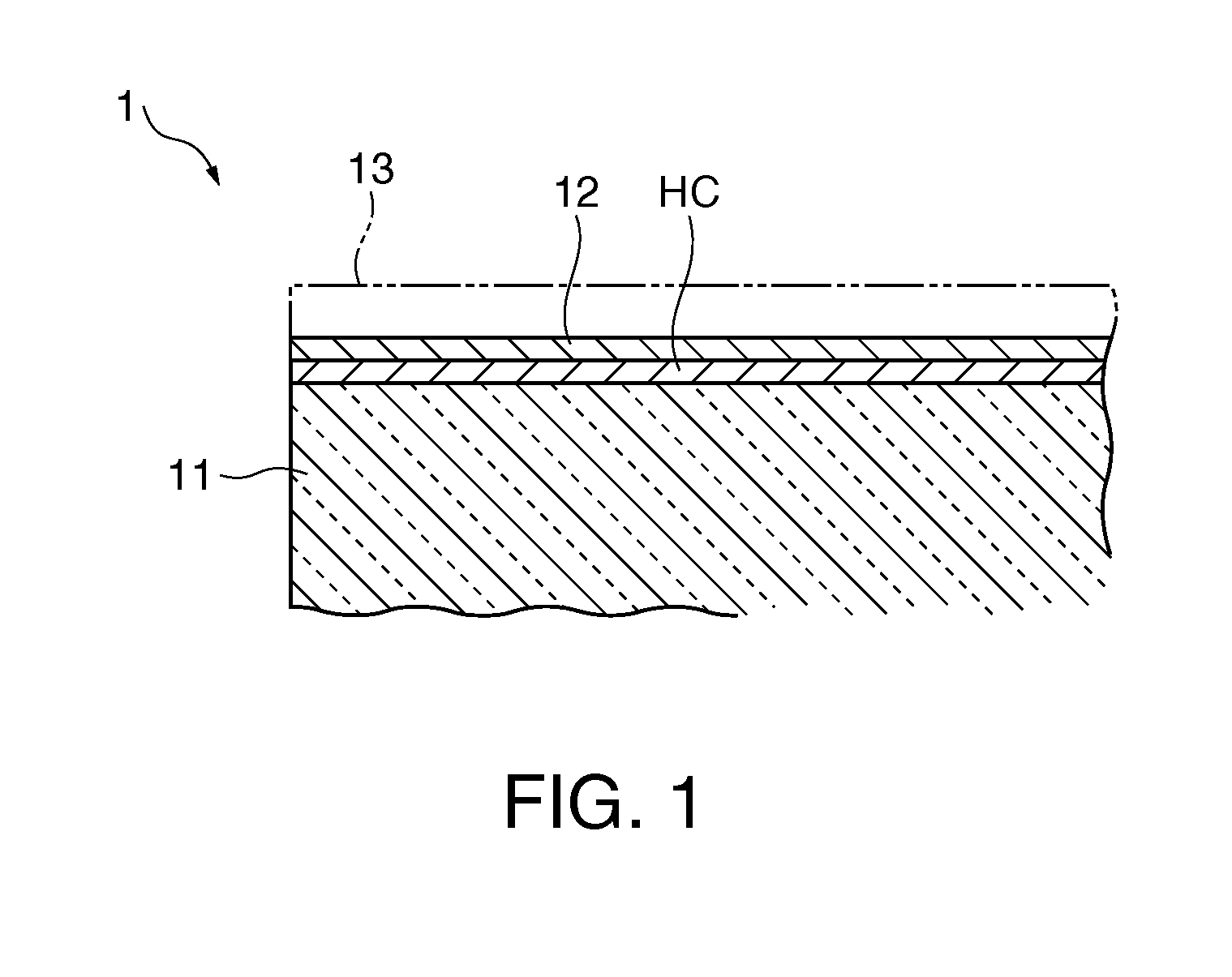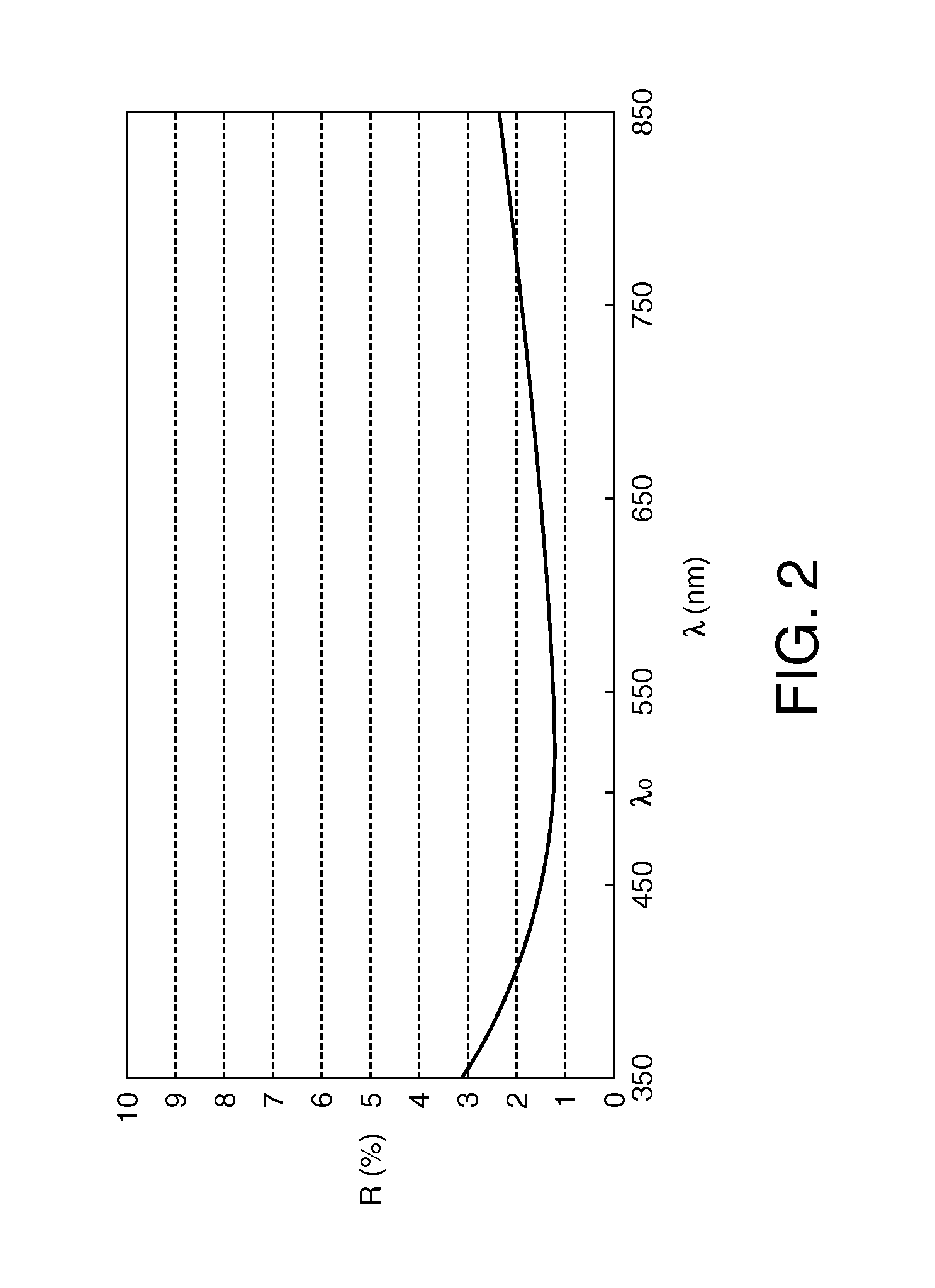Optical device, image-capturing apparatus, electronic apparatus, and method for producing optical device
a technology of optical devices and electronic equipment, applied in the direction of radio frequency controlled devices, instruments, television systems, etc., can solve the problems of forming antireflection films with defects, affecting the quality of optical devices, and requiring a lot of time and labor to form films, etc., to achieve easy adjustment, low cost, and less defects. the effect of defects
- Summary
- Abstract
- Description
- Claims
- Application Information
AI Technical Summary
Benefits of technology
Problems solved by technology
Method used
Image
Examples
Embodiment Construction
[0041]Embodiments of the invention will be described with reference to the accompanying drawings.
[0042]FIG. 1 is a cross-sectional view of a main part of an optical device 1 according to an embodiment.
[0043]In FIG. 1, the optical device 1 includes a light-transmissive base material 11, a hard coat layer HC provided on a principal surface of the light-transmissive base material 11, and an organic antireflection layer 12 provided on a principal surface of the hard coat layer HC. The organic antireflection layer 12 is provided on either one or both of the two principal surfaces of the light-transmissive base material 11.
[0044]In this embodiment, a water-repellent film 13 may be provided on the organic antireflection layer 12.
[0045]The optical device 1 is a birefringent plate, a lid, or a cover glass to be used in an image-capturing apparatus of a digital camera, or a wave plate or a dust-proof glass to be used in a liquid crystal projector and a pickup apparatus, or other optical devic...
PUM
| Property | Measurement | Unit |
|---|---|---|
| thickness | aaaaa | aaaaa |
| refractive index | aaaaa | aaaaa |
| refractive index | aaaaa | aaaaa |
Abstract
Description
Claims
Application Information
 Login to View More
Login to View More - R&D
- Intellectual Property
- Life Sciences
- Materials
- Tech Scout
- Unparalleled Data Quality
- Higher Quality Content
- 60% Fewer Hallucinations
Browse by: Latest US Patents, China's latest patents, Technical Efficacy Thesaurus, Application Domain, Technology Topic, Popular Technical Reports.
© 2025 PatSnap. All rights reserved.Legal|Privacy policy|Modern Slavery Act Transparency Statement|Sitemap|About US| Contact US: help@patsnap.com



